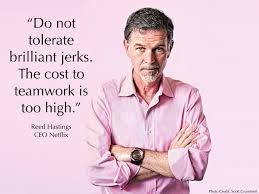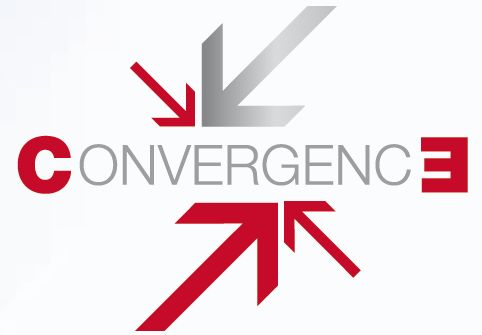Late last year I wrote on this blog about my frustration with the lack of Big Ideas driving innovation. My rant was stimulated by a New York Times article on the grim underbelly of the “an app for everything” culture: people who were working on “small ideas,” and losing their shirts in the process. I also shared the thoughts of other entrepreneurial leaders, investors, and journalists, also bemoaning the fact that we seem to have lost our way, and are no longer thinking BIG. This morning I stumbled on a post on the HBR Blog Network, entitled “Idea Entrepreneur: The New 21st Century Career.” I took some editorial license and added the words “Big” and “Social” to my blog post, simply because the author was actually making the case for Big Ideas and Social Entrepreneurship, and the hopeful sign that there may be a re-emergence of people who care about Big Ideas. Read my original post here, followed by the HBR Blog post.
The concept of “social entrepreneurship” has noticeably taken off with this generation of young people. While there some debate about the definition of “social entrepreneurship,” I am comfortable with the following explanation.
A social entrepreneur is a person who pursues novel applications that have the potential to solve community-based problems, both large and small. These individuals are willing to take on the risk and effort to create positive changes in society through their initiatives.
Examples of social entrepreneurship include microfinance institutions, educational programs, providing banking services in underserved areas and helping children orphaned by epidemic disease. Their efforts are connected to a notion of addressing unmet needs within communities that have been overlooked or not granted access to services, products, or base essentials available in more developed communities. A social entrepreneur might also seek to address imbalances in such availability, the root causes behind such social problems, or social stigma associated with being a resident of such communities. The main goal of a social entrepreneur is not to earn a profit, but rather to implement widespread improvements in society. However, a social entrepreneur must still be financially savvy to succeed in his or her cause.
I had the good fortune of working with the global social entrepreneurship NGO, Enactus and a group of my students from the UBC Faculty of Management. We interacted with other social entrepreneurship groups as far afield as Perth, Australia, and Rotterdam in the Netherlands to develop our own project. Enactus categorizes projects by the potential for the project to become self-sustaining by the participants, and the original project volunteers working themselves out of a job. Our project was designed to meet the highest categorization within Enactus. We designed a roof-top hydroponic vegetable garden project that would produce high yield cash crop fruits and vegetables for the homeless community, managed by a local housing organization. The end goal was to enable the homeless volunteers to take over the operation, generate income for themselves, and collaborate with the charity organization to enter into simple permanent housing.
Read more: What Makes Social Entrepreneurs Different?
“Big” Idea Entrepreneur: The New 21st Century Career
Reblogged from the HBR Blog Network
by John Butman | 10:00 AM May 27, 2013
Read more: http://blogs.hbr.org/cs/2013/05/idea_entrepreneur_the_new_21st.html
There is a new player emerging on the cultural and business scene today: the idea entrepreneur. Perhaps you are one yourself — or would like to be. The idea entrepreneur is an individual, usually a content expert and often a maverick, whose main goal is to influence how other people think and behave in relation to their cherished topic. These people don’t seek power over others and they’re not motivated by the prospect of achieving great wealth. Their goal is to make a difference, to change the world in some way.
Idea entrepreneurs are popping up everywhere. They’re people like Sheryl Sandberg (Facebook COO and author of Lean In), who is advocating a big new idea from within an organization. And like Atul Gawande (the checklist doctor), who is working to transform a professional discipline. Or like Blake Mycoskie (founder of TOMS shoes), who has created an unconventional business model.
In my research into this phenomenon (which forms the basis of my book, Breaking Out), I have been amazed at how many different kinds of people aspire to be idea entrepreneurs. I have met with, interviewed, emailed or tweeted with librarians, salespeople, educators, thirteen-year-old kids, marketers, technologists, consultants, business leaders, social entrepreneurs — from countries all over the world — who have an idea, want to go public with it, and, in some cases, build a sustainable enterprise around it.
The ones who succeed — whether it’s disrupting an established way of doing business as Vineet Nayar has done with his company or bringing a mindset change to a small community like Maria Madison has done in Concord, Massachusetts — share the following methods:
- They play many roles. They are manager, teacher, motivator, entertainer, coach, thought leader, and guru all rolled into one. Think Reid Hoffman (founder of LinkedIn and author of The Start-Up of You), Daniel Pink (author of Drive) or, in India, Kiran Bedi, leader of a worldwide movement to transform prisons and root out corruption.
- They create a platform of expressions and generate revenue to support their social activities. Idea entrepreneurs have to be exceptionally good at expressing their idea, and usually do so in many forms. They give private talks and major speeches, write books and blogs and articles, participate in panels and events, engage in social media — activities that can generate revenue (sometimes in considerable amounts), through a combination of fees, sales of their expressions, and related merchandise. Jim Collins has created a long-lasting enterprise supported by the sale of books and media, as well as fees for consulting, speaking engagements, and workshops.
- They offer a practical way to understand and implement their idea. Because people have a hard time responding to an abstract idea, the idea entrepreneur develops practices (and personally models them, too) that lead people to the idea through action. Bryant Terry, an “eco-chef” who argues that good nutrition is the best path to social justice, embeds his ideas in cooking methods and suggestions for social interaction around good food.
- They draw other people into their idea. The idea entrepreneur gathers people into the development, expression, and application of their idea. They form affiliations, build networks, and form groups. Al Gore created the Climate Reality Project Leadership Corps to bring his ideas about environmental sustainability to people around the world. Eckhart Tolle, a spiritual leader and author of The Power of Now, has established the online Eckhart Teachings Community with members in 130 countries. This inclusion of many people in many ways creates a phenomenon I call respiration— it’s as if the idea starts to breathe, and takes on a life of its own.
- They drive the quest for change. It is all too common that people with an idea for an improvement or a change to the world are satisfied to point out a problem, propose a solution, and then expect others to execute. The idea entrepreneur, however, sees the expression of the idea as the beginning of the effort — and it can be a lifelong one — in which they will continue to build the idea, reach new audiences, and offer practices that lead to change. Dr. Bindeshwar Pathak, based in Delhi, believes that world-class sanitation is necessary for India to realize its full potential. In forty years of idea entrepreneurship — spent in writing, speaking, travelling, network building, and technology development — he has influenced the way millions of people think and act.
People who have shaped our thinking and our society over the decades, even centuries, and continue to do so today — from Benjamin Franklin to Mohandas Gandhi to Hannah Salwen, an American teenager who modeled a disruptive approach to philanthropy — have followed the path of the idea entrepreneur.
These days, the model is well-defined and, thanks to the amazing range of activities we have for creating and sharing ideas, is within reach for just about anyone. If you have an idea, and want to go public with it, idea entrepreneurship can be one of the most powerful forces for change and improvement in the world today.

























